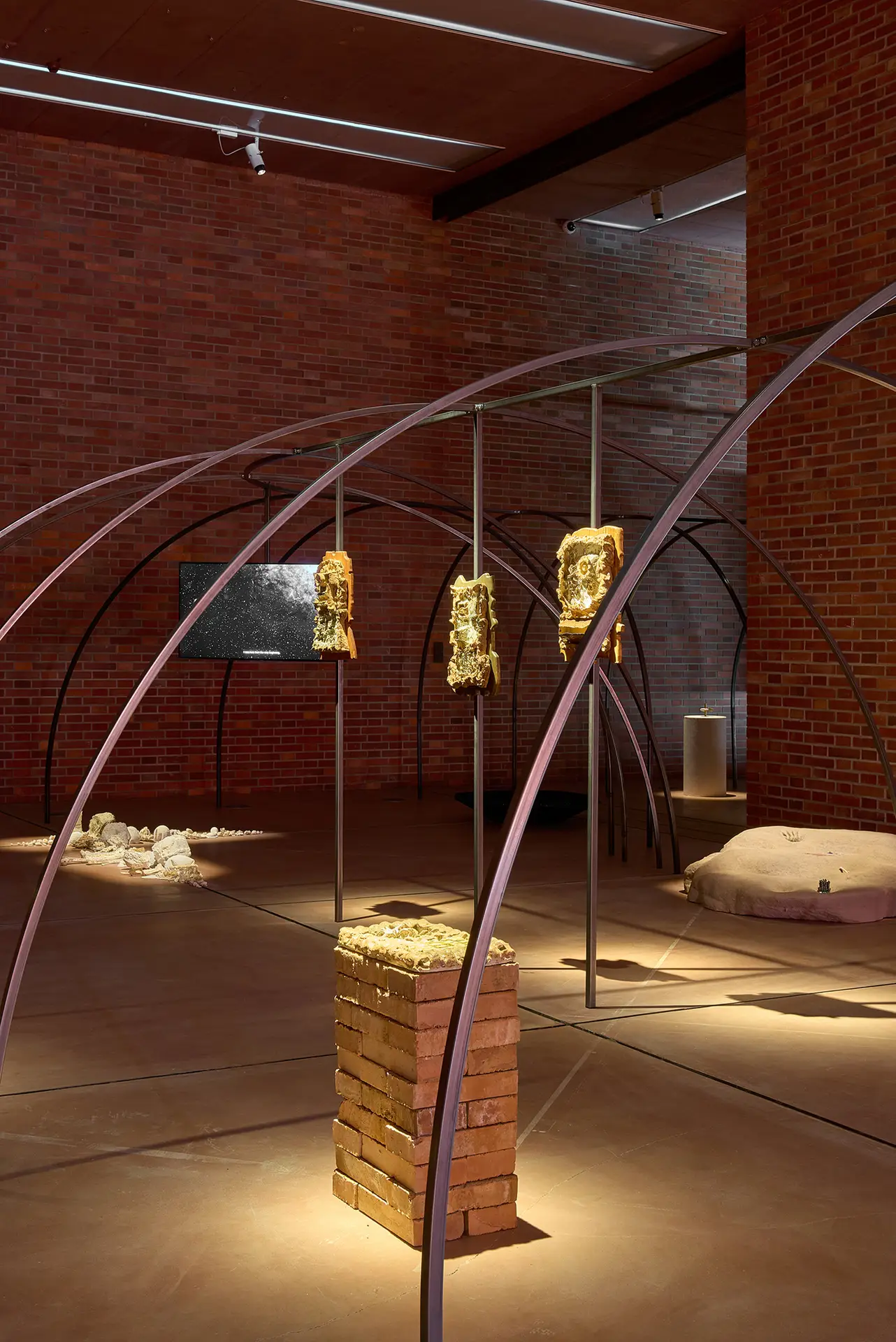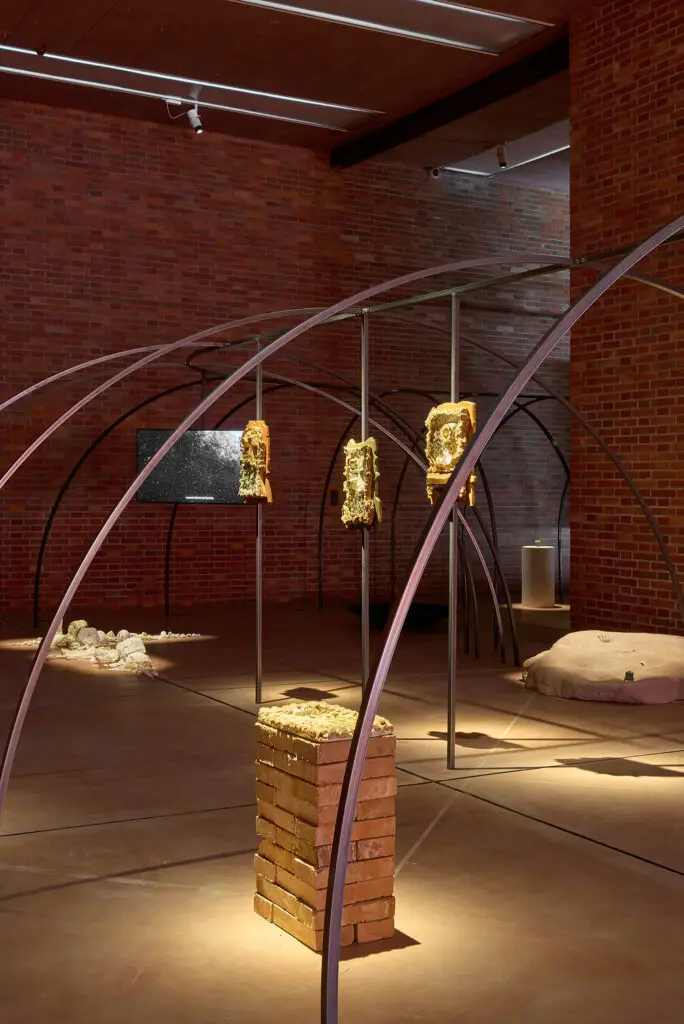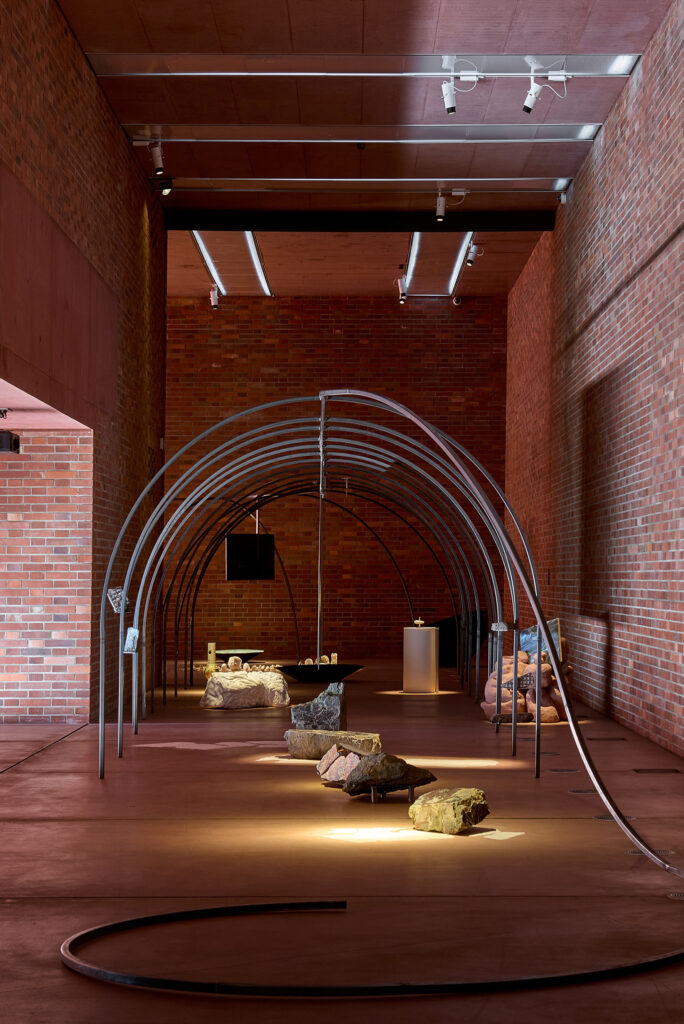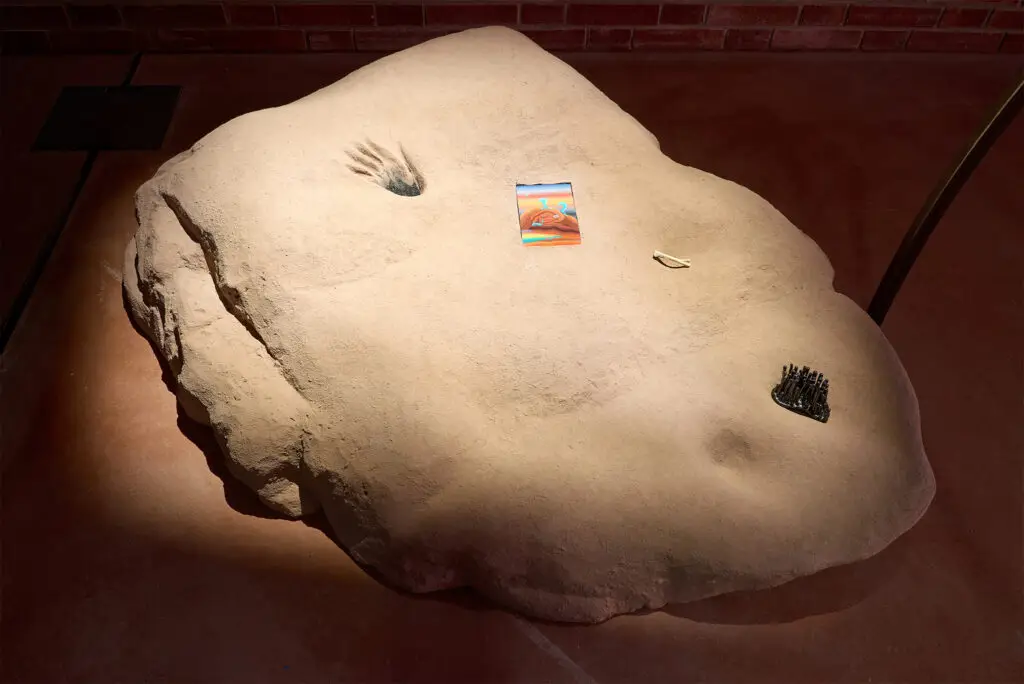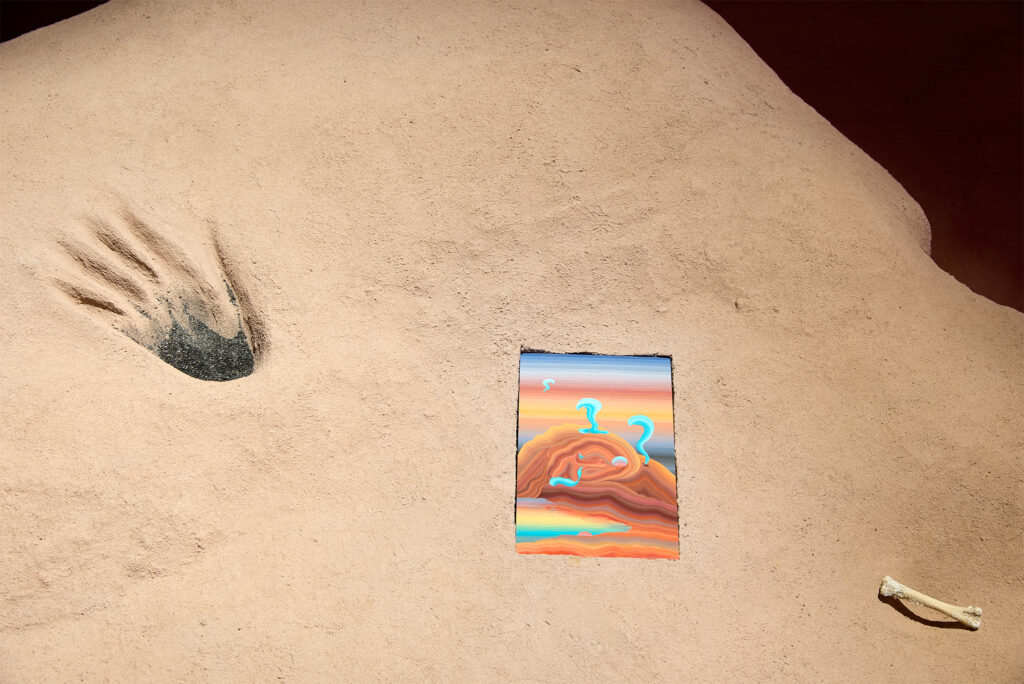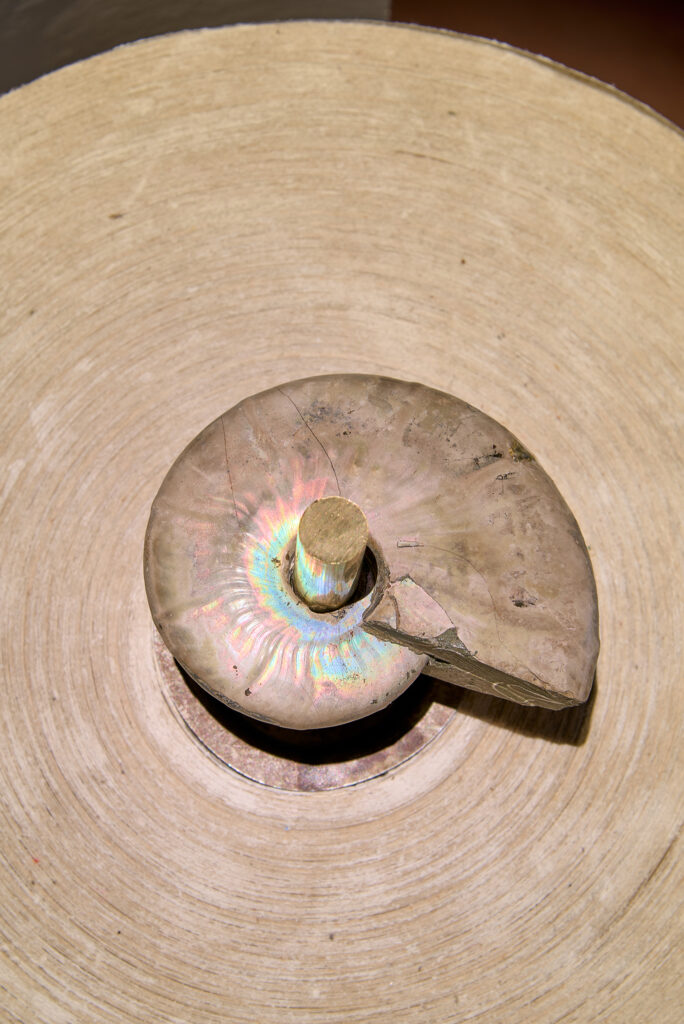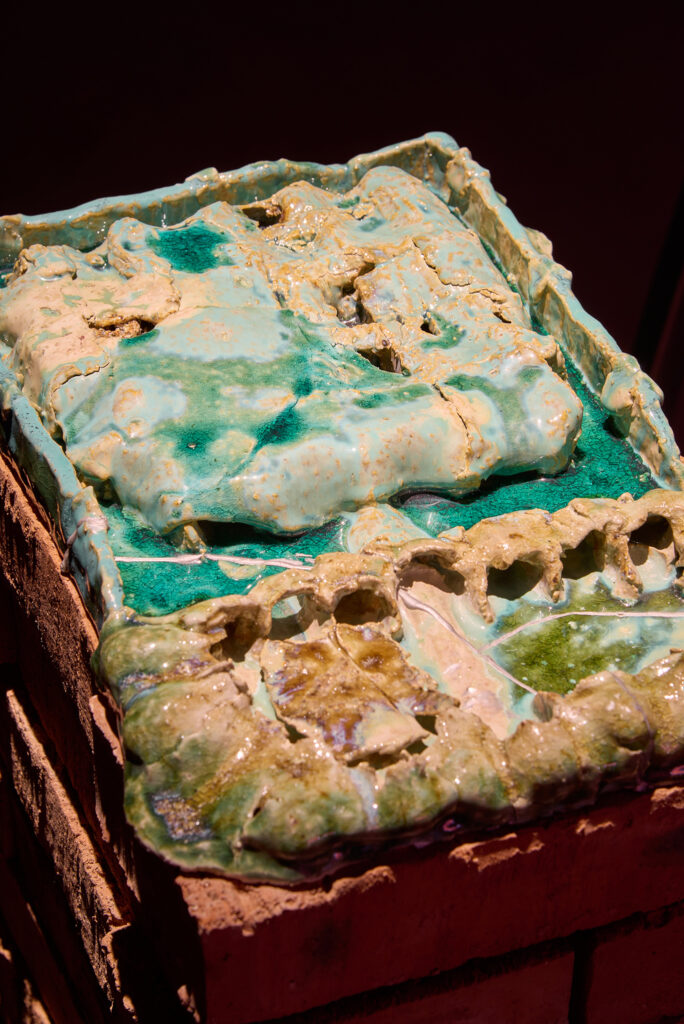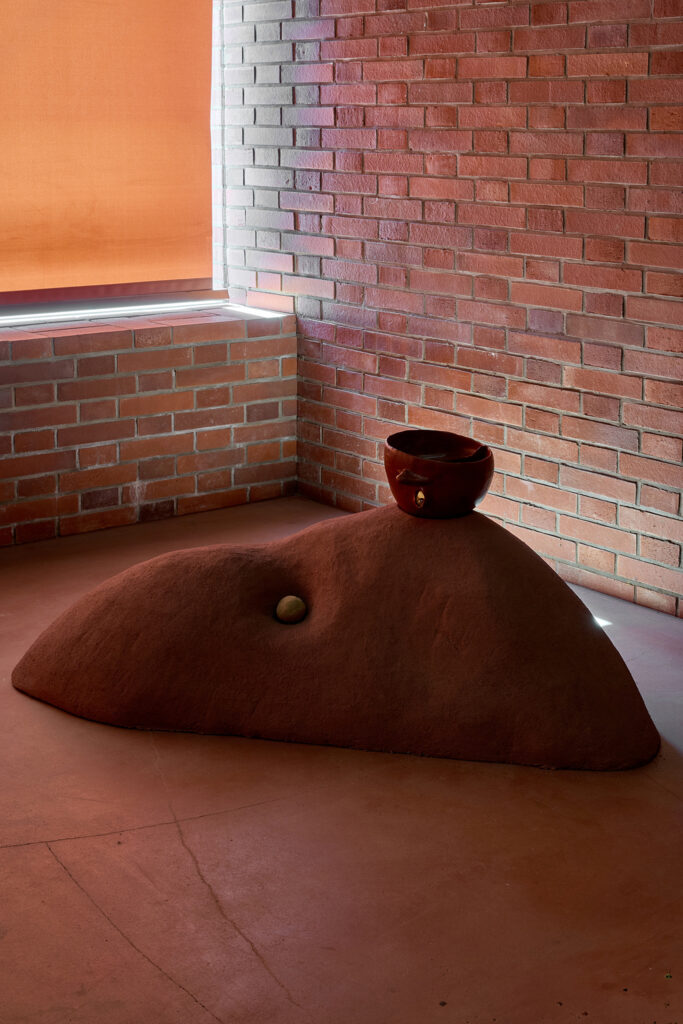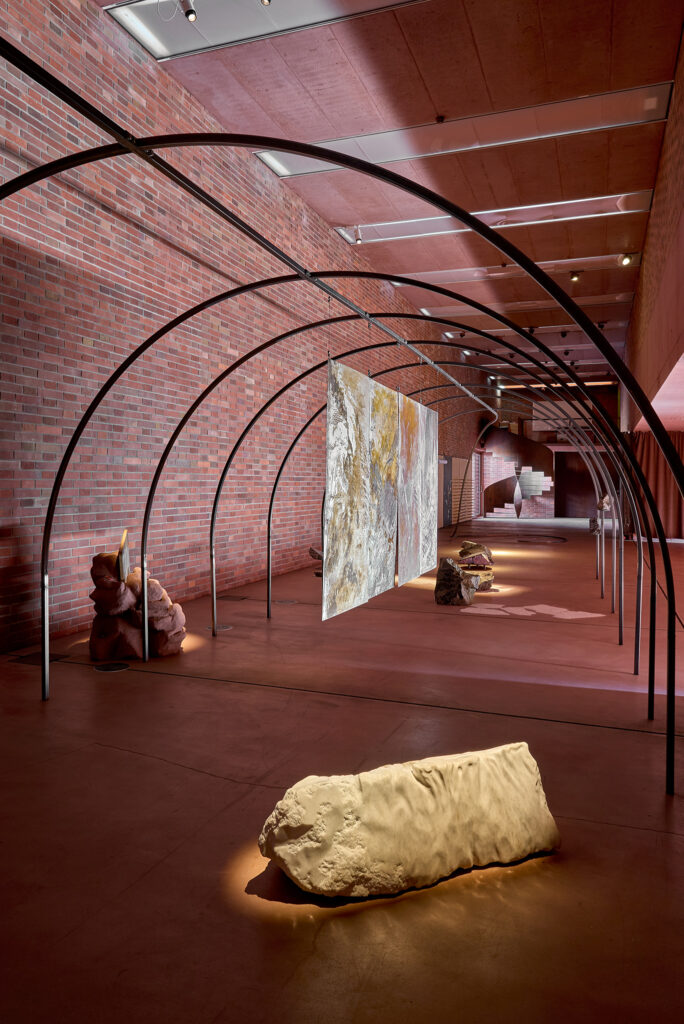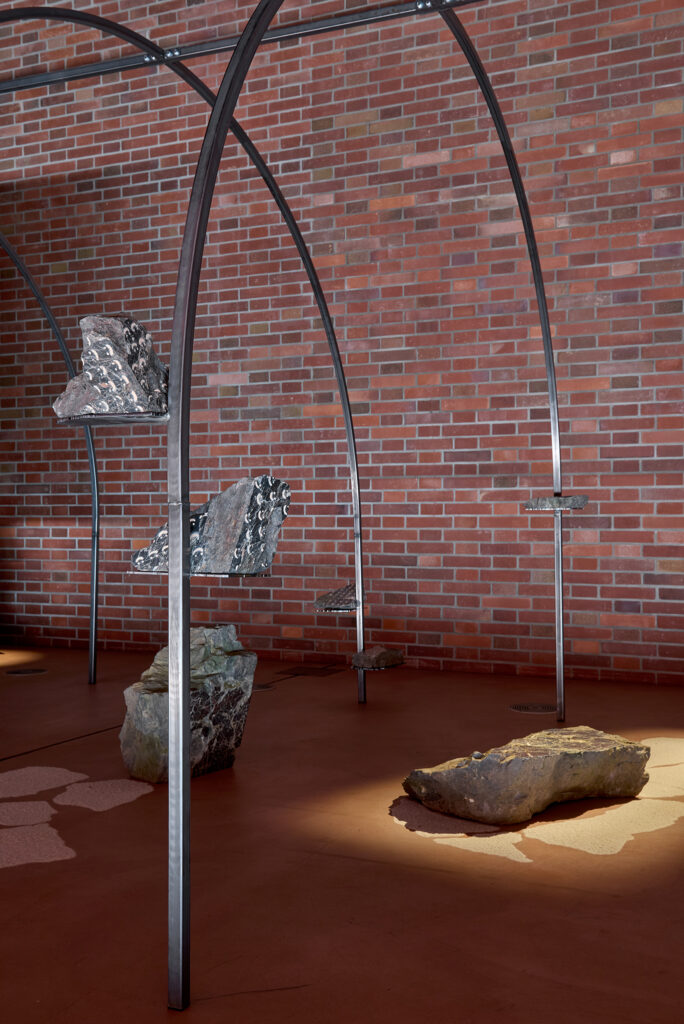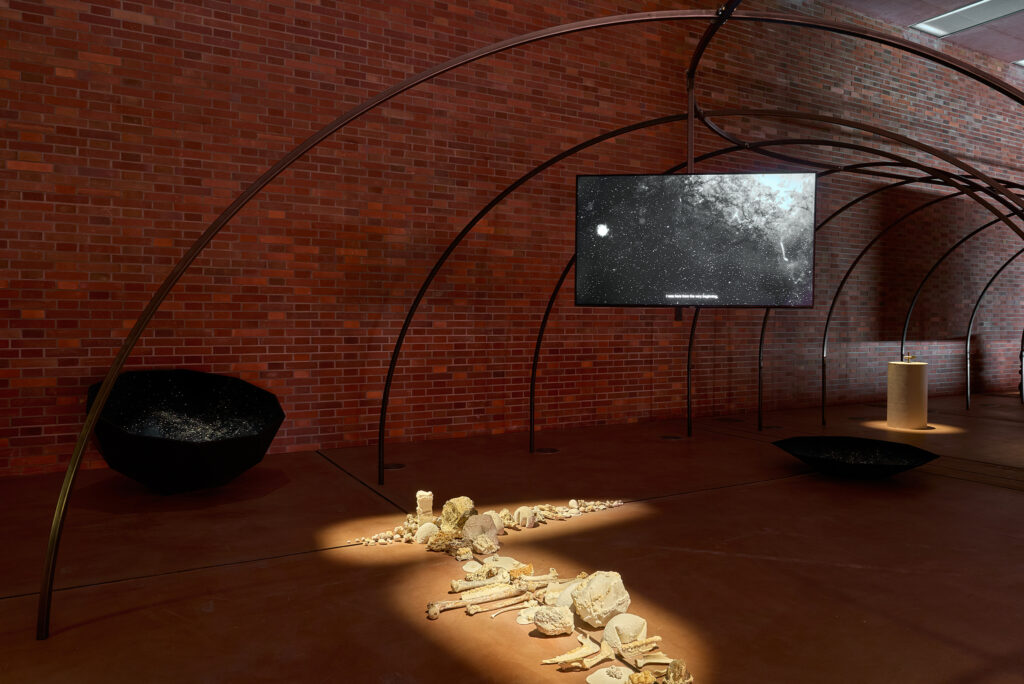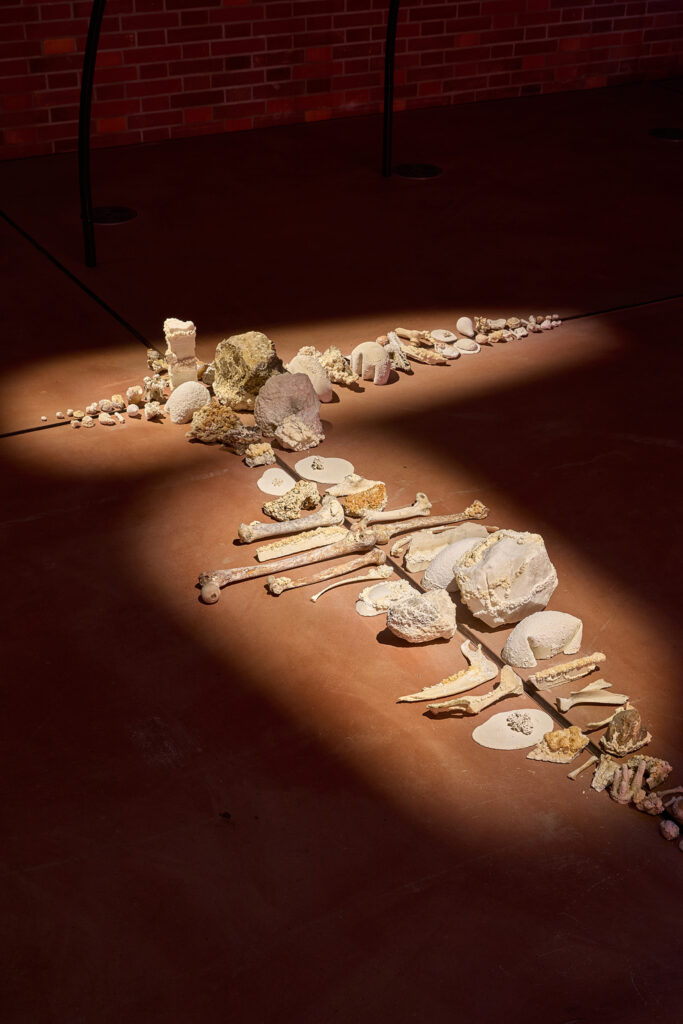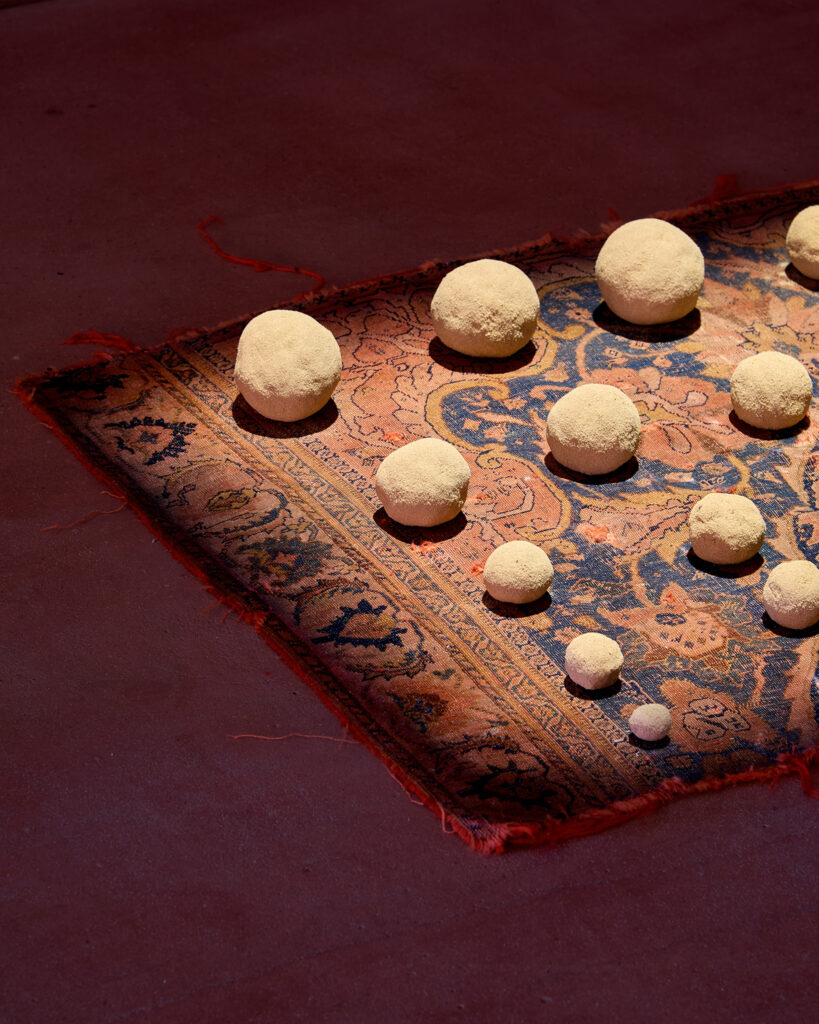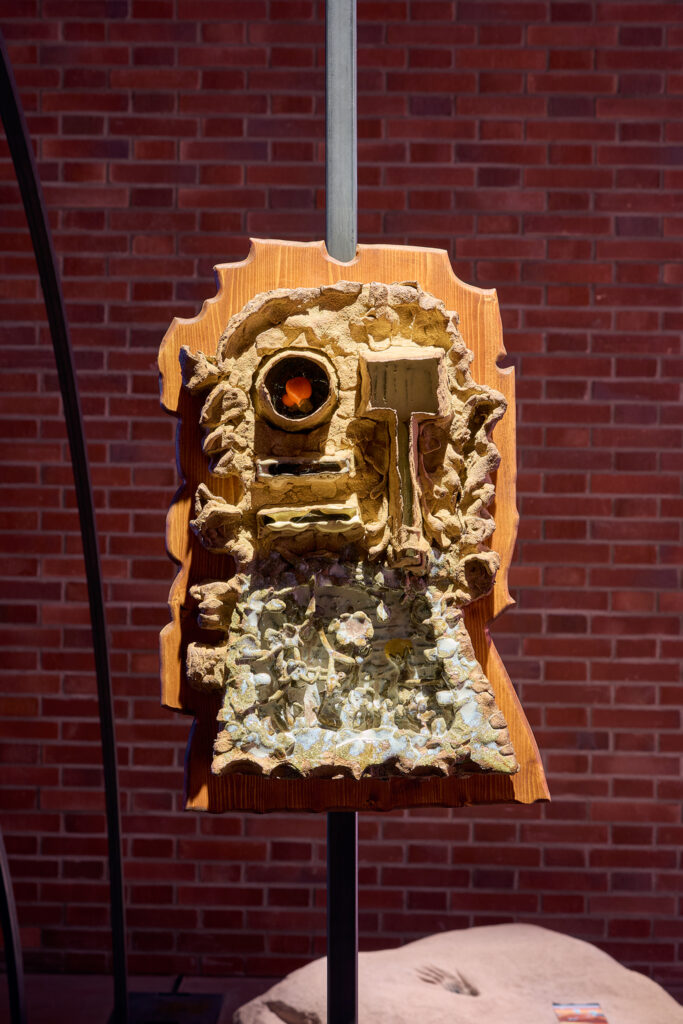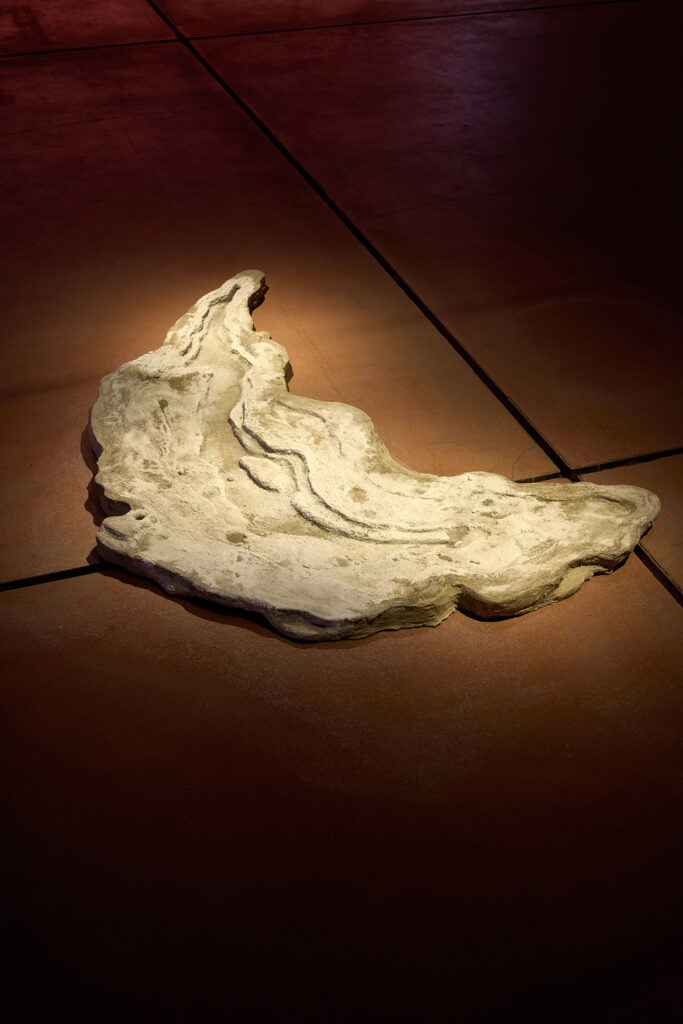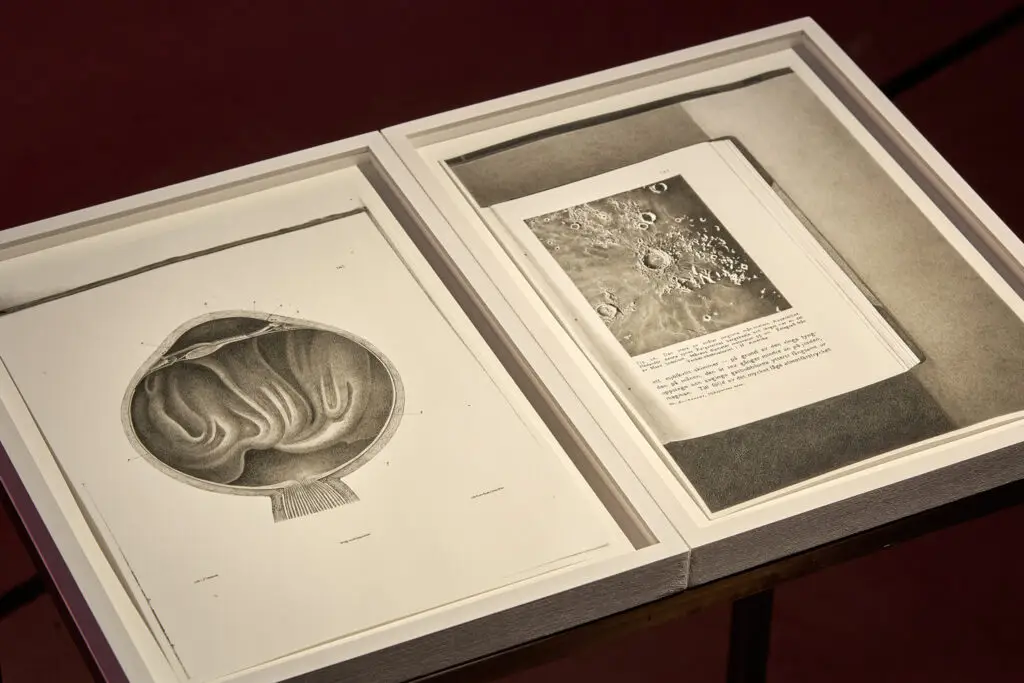Title: III: Bodies of Dust
Participating artists: Jenny Ȧkerlund (SWE), Jindřiška Jabůrková (CZ), Noa Kurnick (IL), David Střeleček (CZ), Anetta Mona Chişa (RO/SK/CZ), Dagmar Šubrtová (CZ), Jaroslav Kyša (SK), Nela Pietrová (CZ), Matěj Liška (CZ), Šárka Koudelová (CZ)
Curator: Šárka Koudelová
Venue: GAMPA / City Gallery Pardubice
Photos: František Svatoš
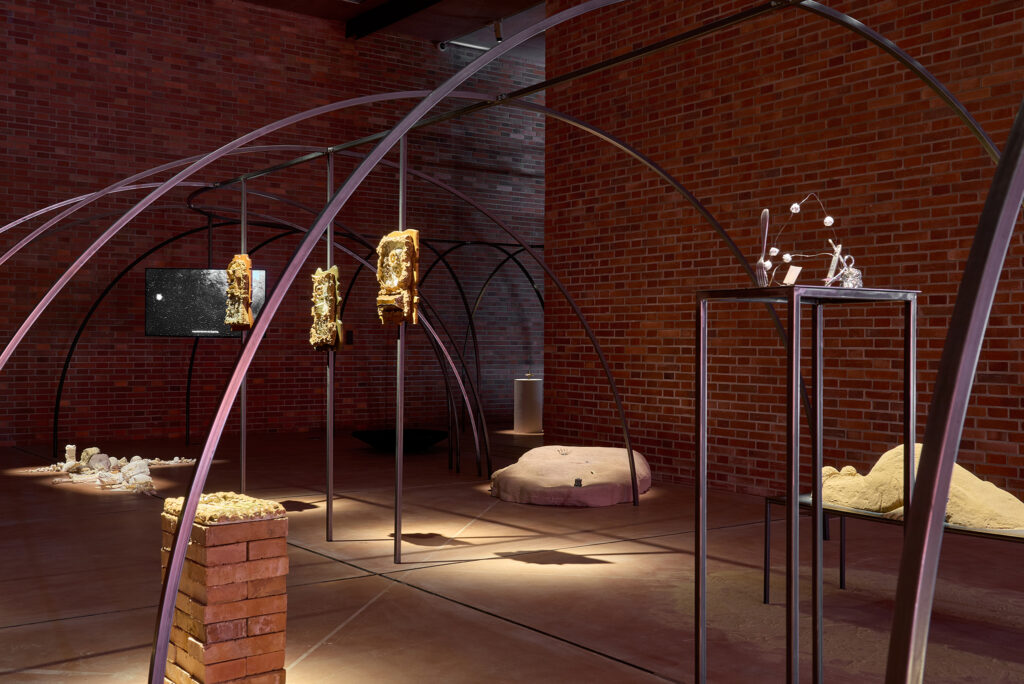
The exhibition title and its central conceptual axis are a conscious reference to Astrida Neimanis’ essay Bodies of Water. Her discourse on the water our bodies share with the planet’s larger cycles served as a necessary articulation of the realization that we are directly part of surrounding ecosystems—which, even for self-interested reasons, we must empathize with and care for. III: Bodies of Dust follows this line of thinking, thematizing the mirroring of the human body and experience in geological materials and processes. The exhibition is the third chapter in an open series of group projects in which Šárka Koudelová combines her roles as artist and curator, seeking new forms of collaboration within the global art scene. Like the previous two chapters, III: Bodies of Dust aims to become a layered and inclusive communicative tool that allows the subject to be explored from different perspectives of all participants, with the goal of shared experience and a physical as well as conceptual merging of all artworks into one environment—or body.
The metaphor of the human body as dust, clay, or sand is as old as our cultural consciousness itself. Still, it seems necessary to update this physical interconnectedness with all matter on Earth. We feel the need to reformulate it and, through shared experience, shift the societal understanding of the human body and the influences inscribed into everything that enters it, is absorbed, crystallizes, metamorphoses, and becomes its synthetic component. The range of tones in sculptural clay overlaps with the palette of human skin and internal organs. Until it dries, clay has a highly variable, almost fluid form. But when handled carelessly or exposed to rapid temperature changes, it cracks; without water it wrinkles, splits, decomposes, and turns to dust. Just like our vulnerable bodies, it is directly dependent on the ratio of chemical elements and water content. Like our decaying and rebirthing bodies. Carried by air currents, we sometimes breathe in Saharan sand or stardust— which can be understood here as an all-pervasive magical element that, according to the panspermia theory, brought life to our planet in the form of microbial spores traveling on solid micro-particles through cosmic space.
The realization that living and non-living matter on Earth and in the cosmos is shared invites empathy with extra-systemic identities and non-human bodies. The gallery space, built from clay bricks, is therefore perceived as an equal organism—a body we share with incoming viewers, a body that is also our own. Just as the bodies of mother and child are forever linked by bidirectionally migrated cells, our artworks are parts of the gallery body, being elevated to its organs—or burdens on its vital functions, like kidney or gallstones.
It is easy to identify with the clay body of the gallery—it has a spine, just like us. The spine forms the axis of the entire bodily space; it allows it to stand upright, to bend, and to rest. Muscles are attached to it; it determines the rhythm of the arrangement of other parts, supporting and protecting them. In the safe space beneath the ribs, the dust mingles.
